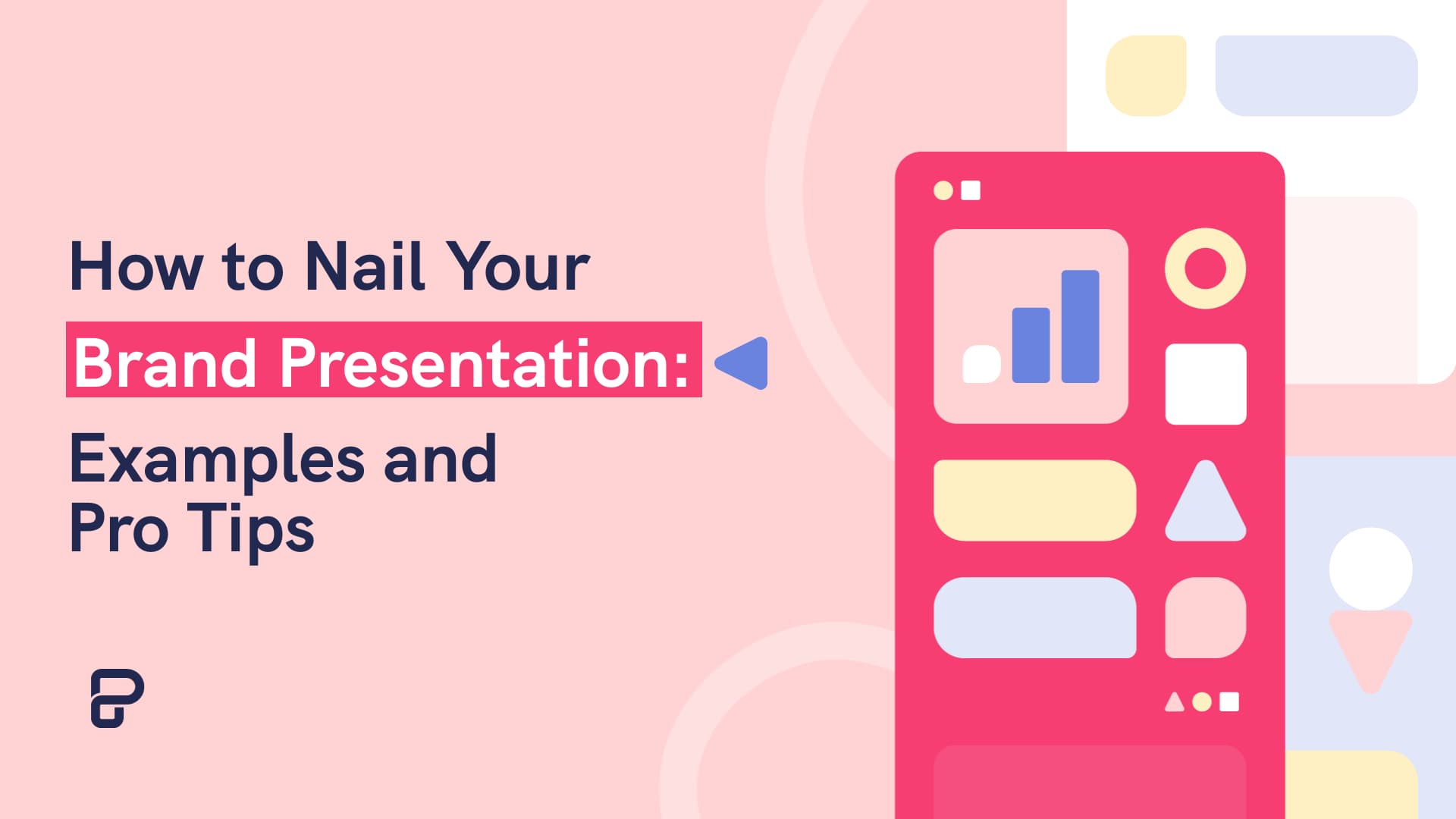We’ve all seen presentations that were either too cluttered with text and graphics, or too bare, with slides containing nothing but text and white space.
Whatever the case, poor design can distract from the overall purpose of your presentation, whether it’s a:
- Keynote presentation that inspires and informs the audience
- Pitch deck that raises capital with investors
- Sales presentation that generates leads and sales
- Product presentation that raises product/brand awareness
The visual aspect of a presentation is a powerful tool that every presenter should maximize.
According to one paper, only 30 percent of the population are verbal learners — people who learn by hearing, whether in-class lectures and discussions.
On the other hand, 65 percent need to see what they’re learning.
But visual elements are just one side of the story that is presentation design.
You also have factors like the relevance of your message to the audience, the flow or sequence by which information is presented, and even the skill of the presenter.
Keep reading as we go through all the steps needed to create a presentation that clicks with your audience. You can follow along by creating a free account to access Piktochart’s online presentation maker.
1. Tailor your presentation to the event and its audience
Before you even begin creating your presentation, you must first figure out who it’s for.
Start with the general background of the event and its objectives.
For example, a tech startup conference like Tech in Asia is geared towards knowledge-sharing, particularly between startup founders, entrepreneurs, and tech professionals.
Other events, like the Global Payment Summit, obviously cater to professionals in the finance and fintech industries.
Certain annual events will also tackle a specific theme, or themes, for the year.
For example, this year’s Asia edition of Bloomberg’s Sooner Than You Think series will revolve around artificial intelligence.
Next, do your homework on the people attending the event.
After all, your presentation is about them, not you. What industry or industries do the event participants come from? What are their goals for attending the event and what do they hope to get from watching the speakers’ presentations?
How old do the people attending the event tend to be? Are there more men or more women? More importantly, what does the audience care about?
What they care about can be completely different from what you think is important. Here is where a bit of social media listening comes in.
If you’re presenting at an annual event, for example, look up last edition’s online chatter to see what participants liked and didn’t like. If the event has an official hashtag, use it to scour online mentions.
You can also talk to people who might actually be interested in the event you’ll be presenting in.
For example, as mentioned earlier, the Tech in Asia conference is aimed at startups in Southeast Asia.
So, you can expect the audience to be a mix of entrepreneurs, startup professionals, as well as students seeking internship and employment.
Looking up the background of an event you’re invited to is the most basic thing any speaker can do to have a successful presentation.
This also helps you set a clear goal for your presentation.
Is it to get people to learn more about your brand and products? Inspire them to live more sustainably? Do you want them to buy your book?
Figuring out the answers to these questions will help your presentation focus on a topic that matches the interests of the people attending the event.
Pro tip: It’s a good idea to talk about something your audience doesn’t know rather than repeat information they’ve already heard before.
This is where sharing case studies from your own research comes in. This will hit two birds with one stone.
First, it gives you something new and unique to talk about, making your presentation more interesting.
Second, it establishes you as a thought leader, compelling the audience to learn more about you or your brand.
2. Create the perfect outline
Far too many presenters create presentations in either one of two ways:
- They boot their computers, open PowerPoint, and begin creating their slides.
- They open a previous PowerPoint presentation, copy some old slides into a new file, and add new slides to complete their message.
Either way, both options aren’t exactly effective at creating a presentation with a clear goal and a central message. What you need is an outline for your presentation.
Your outline maps out a clear flow that each of your slides will follow to carry your audience from the introduction of the presentation to its end.
When creating an outline, you can ask yourself these questions:
- What big idea(s) do you have in mind that will serve as the thesis of your presentation?
- What are your primary talking points to support this central idea?
- What are your supporting data? Where and how will you get your data?
Note that different types of presentations can have different recommended outlines.
Pitch decks, for example, are better off having fewer slides than more, with the average investor only spending approximately four minutes on one deck.
Case in point: Airbnb’s legendary pitch deck only has 12 slides.
Pro tip: When creating pitch decks or sales and product presentations, consider following Sequoia Capital’s recommended deck outline, which includes the following talking points:.
- Introduction/title slide
- Problem
- Solution
- “Why now” or urgent need for your solution
- Market size
- Product
- Team
- Business model
- Competition
- Financials
3. Prepare your slides
Many presenters make the mistake of using their presentations as a crutch, reading the text off of each slide instead of using it as a visual aid to reinforce their talking points.
Depending too much on your slides makes your presentation sound canned, boring, and inauthentic.
In fact, the folks at TED note that many of their best TED and TEDx Talks don’t even have slides.
So if you are going to use slides, make sure they add to your presentation rather than distract or bore the audience.
As for how your slides should appear, the general consensus is that less is more.
For example, in a presentation during Google IO in 2017, Google CEO Sundar Pichai barely used any text throughout his keynote.
From the beginning of his presentation, it took around 12 slides for 40 words to appear on the screen.
In contrast, one report shows that the average presentation has around the same number of words in a single slide.
If you aren’t sure if your slides need to be in your presentation in the first place, ask yourself these questions:
- Are the slides text-heavy? Again, slides are visual aids that provide context to your talk, not distract the viewer/listener from your big idea(s).
- Does each slide have too much information? Make sure to have each slide supporting one point only.
- Is the slide necessary? Slides should add value to your presentation. If it’s simply regurgitating what you’re already saying, you don’t need it.
Pro tip: Once you have a good idea of your presentation’s flow and content of each slide, use Piktochart to create your slides using our wide variety of design tools, graphics, and templates.
You can also visit this step-by-step guide on how to create a killer presentation on Piktochart.
Another good strategy is to use visuals that enhance the meaning of your message.
Punchy images add emotion to your talking points, helping them resonate with your audience without distracting them.
Use photos that reflect that concept of your big idea — it can be a metaphor or something more literal, but it should be clear to your audience why they’re looking at it.
4. Practice, practice, and practice some more
When it comes down to it, the key to a great presentation is preparation and a lot of practice.
If you look at examples of impressive pitches, TED talks, and keynote presentations, you’ll notice that they’re all backed by great research, meticulous attention to detail, and a smooth flow.
Admittedly, not everyone is good at public speaking. In fact, in one survey it was cited as something feared more than death.
But with enough practice, anyone can be (or appear to be) confident on stage.
For starters, practice talking slowly. According to the U.S.-based National Center for Voice and Speech, the average rate of speech for native English speakers, at least in the U.S., is 150 words per minute.
When making a presentation, your goal is to speak slower than that—think around 120 to 130 words per minute, especially if you aren’t used to making speeches or presentations.
Speaking slowly helps you modulate your voice and enunciate your words.
Which may seem weird at first if you’re used to talking at a faster clip, but will ensure your audience hears every word you say.
As an example, here’s a presentation by Alibaba founder Jack Ma.
Ma’s presentation style may be slower and sound more calculated, but it’s also free of filler words like “um,” “uh,” “er,” “like,” “okay,” and “you know.”
Aside from your voice and the way you talk, it’s also a good idea to work on your body language.
You may have heard of the widely-cited study that only 7 percent of human communication is verbal and 93 percent is tone and body language.
In other words, how you say things and how you move on stage is just as important, if not more, than what you’re actually saying.
Pro tip: The best way to assess how you sound and appear when making a presentation is to record a video of yourself rehearsing your keynote or pitch.
This will allow you to spot bad habits like excessive hand waving, fidgeting, and looking around too much.
Taking a video of yourself making a mock presentation will also help you catch possible issues about your presentation, such as not enough or excessive information, lack of supporting details, and weird transitions.
Bringing it all together
Remember, doing your due diligence for a presentation can be the difference between sounding trustworthy and professional on stage, and looking like an amateur.
When a lot is riding on your presentation, such as a sale or an opportunity to raise capital, the last thing you want is to be seen as an amateur during your presentation.
Remember the following tips to prevent this from happening to you:
- Prepare for a presentation as early as possible. For example, TED recommends that speakers begin preparing three months before their presentation.
- Find inspiration from other notable speakers, whether it’s Tony Robbins, Steve Jobs, or Tony Fernandez. Pick their presentations apart to see how they talk and build rapport with the audience.
- Use a presentation design tool like Piktochart to create beautiful presentations. Our pre-made presentation templates are a safe option if graphic design is not your strong suit.
- Make your presentation about your audience, not you. Put your audience first and it’ll be easier to succeed at informing, inspiring, and moving them to take a desirable action (e.g. a sale, a visit on your website, or a follow on social media)
And one last thing. When making a presentation, remember that facts tell, but stories sell.
Great presentations follow a narrative that informs, entertains, and inspires people—sometimes all at once.
Try to create something that adds value and meaning to your audiences’ lives, ensuring that they walk away for your presentation having learned something new.
Piktochart offers professional templates to create presentations, reports, infographics, posters, social media graphics, and flyers. Collaborate with your team for free by creating an account.



